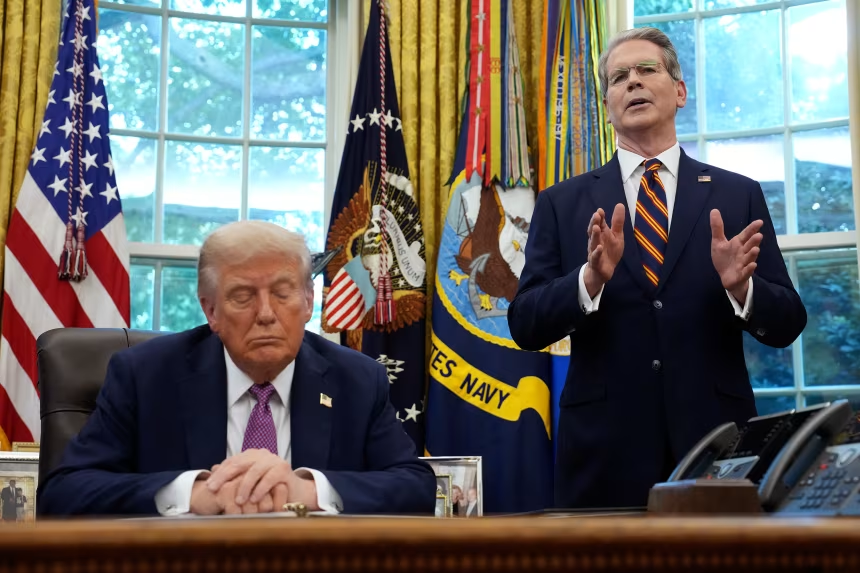The future of Donald Trump’s controversial tariffs now rests with the United States Supreme Court in a case that could have far reaching consequences for trade policy and the federal treasury. Treasury Secretary Scott Bessent has warned that if the court rules the tariffs unlawful the government may be forced to refund nearly half of the revenue collected. That outcome could cost tens of billions of dollars and deal a serious blow to federal finances.
The tariffs known as Liberation Day tariffs were imposed under the International Emergency Economic Powers Act and targeted a wide range of imported goods. A federal appeals court recently ruled that this authority had been overstepped citing the major questions doctrine which limits executive power in areas with sweeping economic consequences. Enforcement of that ruling has been paused while the Supreme Court considers the case.
Bessent has expressed confidence that the administration will ultimately prevail but he admitted that a defeat could weaken Trump’s broader economic strategy. The administration has already petitioned the court for an expedited review with a decision possible before the end of the year. Trump has framed the case as a defining test warning that striking down the tariffs could disrupt trade flows and harm America’s negotiating strength.
Markets have reacted nervously to the uncertainty. Following the appeals court decision equities dipped and Treasury yields rose as investors weighed the risk of large scale refunds and policy reversals. Analysts have noted that the administration could turn to alternative legal authorities such as Section 301 or Section 338 to preserve tariff powers if the IEEPA route is struck down.
The stakes are high both economically and politically. If the Supreme Court upholds the tariffs it will strengthen Trump’s use of emergency powers in trade. If it overturns them it will mark one of the most significant checks on executive authority in modern economic policy and could unleash a wave of costly refunds that reshapes the fiscal outlook.


